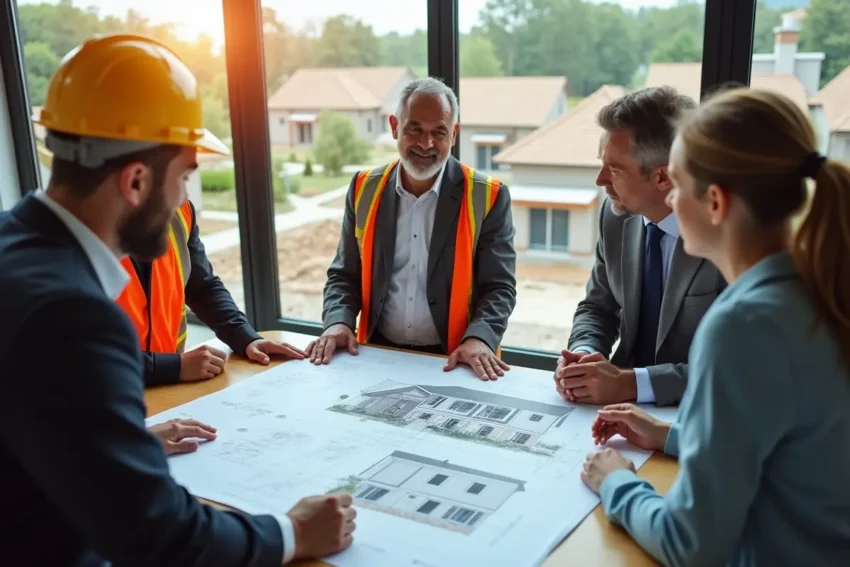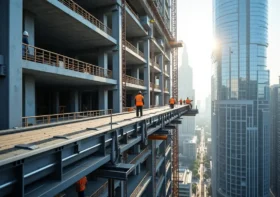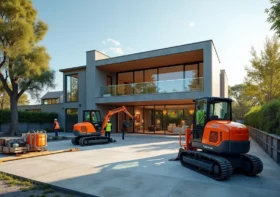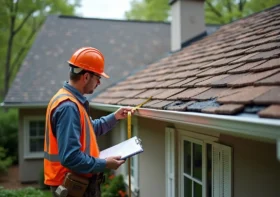Building Strong Communities Through Quality Construction

The impact of quality construction extends far beyond individual buildings and permeates every facet of community life. A well-built home or commercial structure provides lasting value, serving as a foundation for vibrant neighborhoods and prosperous local economies. Emphasizing superior construction standards means communities enjoy improved safety, durability, and visual appeal.
Whether it’s homes, schools, or civic spaces, each project delivers an infrastructure that supports social engagement, security, and growth. Residential improvements such as Fort Lauderdale window replacement contribute to efficiency and protection, showcasing how quality choices at every level strengthen the entire community.
Safe, thoughtfully planned spaces attract residents and businesses alike, building trust and pride among neighbors while ensuring that investments in infrastructure foster stability for future generations. As these spaces become hubs for day-to-day activities and special gatherings, they shape the identity and resilience of the area, reinforcing bonds that unite communities.
Contents
Collaborative Efforts for Successful Projects
Constructing high-quality spaces requires collaborative planning and ongoing communication across a diverse group of stakeholders. Homeowners bring insights into cultural and neighborhood needs, contractors provide technical expertise, and local government officials ensure code compliance and public safety. Through joint planning, potential issues can be identified and solutions devised early, efficiently navigating regulatory requirements and preventing costly mistakes.
The International Code Council emphasizes the importance of building strong relationships among all participants, noting that improved project outcomes and greater satisfaction for community members result when collaboration is prioritized. Open dialogue also encourages creative solutions that reflect local values and address specific environmental and social challenges.
Adherence to Building Codes and Standards
Meeting established building codes is not a bureaucratic formality—it’s fundamental to safeguarding communities. Modern codes are designed to protect lives, property, and the natural environment from the hazards of fire, flooding, hurricanes, and other disasters. Adherence guarantees structures can withstand local risks and are energy-efficient, helping to reduce long-term costs for families and businesses.
Stringent standards aren’t only a matter of law; they also represent best practices collected from generations of experience. Following them cultivates a culture of accountability and elevates trust in the construction process across the region. Local officials and inspectors play a crucial role in guiding projects, ensuring public safety is never compromised.
Community-Focused Construction Initiatives
When a construction project is designed with community needs in mind, the benefits extend far beyond the built environment. Projects, such as a multipurpose center for underserved youth, demonstrate the transformative power of purposeful construction. These projects set inspiring examples for how builders and civic leaders can collaborate to address gaps, elevate community wellbeing, and inspire future generations.
According to a Reuters article, community-centered developments also boost mental health, social interaction, and educational outcomes, providing broad-ranging advantages that endure well beyond the project’s completion.
Economic Growth Through Construction
Quality construction serves as a primary driver of local economic growth. From initial design to final inspection, projects fuel a cycle of employment, business opportunities, and investment. Each build generates jobs across sectors—architects, laborers, suppliers, and service professionals—stimulating the local economy with every phase. In regions with sustained building activity, this economic dynamism is matched by rising property values, revitalization of retail corridors, and increased tax revenue for essential public services.
According to Forbes, investments in modern, energy-efficient facilities further attract outside investments, new residents, and entrepreneurs, thereby creating a self-sustaining environment that fosters long-term prosperity.
Environmental Considerations in Construction
As communities face mounting environmental concerns, sustainable construction practices have become essential. Eco-friendly materials, low-impact site development, and energy-efficient building systems reduce a project’s environmental footprint and deliver ongoing benefits. Developers and property owners alike are prioritizing renewable resources and innovative technologies, from solar panels to recycled building components, to leave a positive legacy for generations.
Integrating green building standards not only minimizes the carbon impact but also often results in lower utility and maintenance costs. These approaches create healthier indoor environments, conserve water and energy, and demonstrate a community’s commitment to stewardship of the natural world.
Challenges and Solutions in Community Construction
Every construction project encounters unique hurdles, such as budget constraints, navigating complex regulations, or managing differing stakeholder expectations. Proactive planning, open communication, and early stakeholder engagement are crucial strategies for overcoming these obstacles. By fostering transparency and accountability from the start, project teams can address concerns swiftly, develop consensus, and build public support.
In challenging moments, leveraging multi-disciplinary teams and third-party mediators can help maintain momentum and ensure that every voice is heard. Thorough site and community research, resourceful value engineering, and ongoing dialogue ultimately yield solutions that align with local priorities and strengthen communal trust.
Conclusion
Superior construction is the bedrock upon which thriving, enduring communities are built. By emphasizing collaboration, code compliance, social considerations, economic benefits, and environmental stewardship, the construction industry continues to shape not just skylines but also the quality of life for countless people. As communities grow and develop, a continued focus on these principles ensures that each new project supports a resilient, cohesive, and sustainable future for all.



